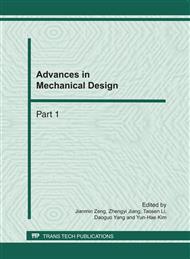p.715
p.721
p.729
p.734
p.739
p.745
p.749
p.754
p.759
Meniscus and Viscous Forces during the Nanoscale Separation of Sphere-on-Sphere Contact Surfaces
Abstract:
When two surfaces are brought into contact or at small separations, the liquid between them forms meniscus, which contributes to adhesion and friction. The increased adhesive force and friction are always the substantial cause leading to micro/nanodevices’s failure. In this study, a dynamic contact model of sphere-on-sphere surfaces during nanoscale separation is presented. A numerical analysis of meniscus and viscous forces based on the dynamic contact model has been carried out. During the separation process, the effects of separation distance, initial meniscus height, surface wettability and separating time on meniscus and viscous forces between the contact surfaces are investigated. The results of numerical solution revealed the adhesion mechanism of sphere-on-sphere surfaces during the separation with liquid mediated. The analyses provide a fundamental understanding of the separating process of two sphere surfaces. It is also useful for the design of the de-wetting and antisticking micro/nanoscale surfaces in various devices.
Info:
Periodical:
Pages:
739-744
Citation:
Online since:
February 2011
Authors:
Price:
Сopyright:
© 2011 Trans Tech Publications Ltd. All Rights Reserved
Share:
Citation:


